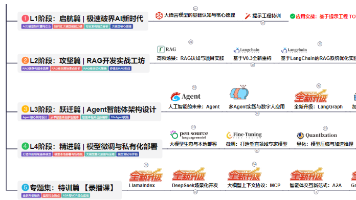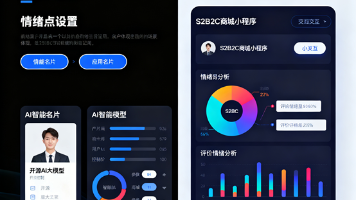AI赋能社交媒体数据智能处理
社交媒体平台每天产生海量的文本和图像数据,人工智能技术通过自然语言处理(NLP)和计算机视觉(CV)技术对这些数据进行高效处理。社交媒体文本数据通常包含非结构化信息,如短文本、表情符号和多语言内容。使用卷积神经网络(CNN)或Vision Transformer(ViT)对图像进行分类。通过结合文本与图像分析技术,人工智能能够高效挖掘社交媒体数据的价值,为企业和研究提供支持。通过预训练模型(如BE
人工智能处理社交媒体文本与图像大数据的技术
社交媒体平台每天产生海量的文本和图像数据,人工智能技术通过自然语言处理(NLP)和计算机视觉(CV)技术对这些数据进行高效处理。以下是关键技术和方法。
文本数据处理技术
社交媒体文本数据通常包含非结构化信息,如短文本、表情符号和多语言内容。NLP技术通过以下方式处理这些数据:
文本预处理
清洗和标准化是文本分析的第一步。去除停用词、标点符号和特殊字符,并将文本转换为小写。
import re
from nltk.corpus import stopwords
def clean_text(text):
text = re.sub(r'[^\w\s]', '', text) # 去除标点
text = text.lower() # 转为小写
stop_words = set(stopwords.words('english'))
words = text.split()
words = [word for word in words if word not in stop_words]
return ' '.join(words)
情感分析
通过预训练模型(如BERT、RoBERTa)识别文本情感倾向。
from transformers import pipeline
sentiment_analyzer = pipeline("sentiment-analysis")
result = sentiment_analyzer("I love this product!")[0]
print(f"Label: {result['label']}, Score: {result['score']:.2f}")
主题建模
使用LDA(Latent Dirichlet Allocation)或BERTopic提取文本主题。
from bertopic import BERTopic
docs = ["AI is transforming industries.", "Social media data is vast."]
topic_model = BERTopic()
topics, _ = topic_model.fit_transform(docs)
图像数据处理技术
社交媒体图像数据包含丰富的视觉信息,计算机视觉技术通过以下方法处理:
图像分类
使用卷积神经网络(CNN)或Vision Transformer(ViT)对图像进行分类。
import torch
from transformers import ViTFeatureExtractor, ViTForImageClassification
extractor = ViTFeatureExtractor.from_pretrained('google/vit-base-patch16-224')
model = ViTForImageClassification.from_pretrained('google/vit-base-patch16-224')
inputs = extractor(images=image, return_tensors="pt")
outputs = model(**inputs)
logits = outputs.logits
目标检测
YOLO或Faster R-CNN识别图像中的特定对象。
from ultralytics import YOLO
model = YOLO('yolov8n.pt')
results = model('image.jpg')
results[0].boxes.xyxy # 检测框坐标
图像生成
扩散模型(如Stable Diffusion)生成或编辑图像。
from diffusers import StableDiffusionPipeline
pipe = StableDiffusionPipeline.from_pretrained("runwayml/stable-diffusion-v1-5")
image = pipe("a cat sitting on a couch").images[0]
多模态数据处理
社交媒体数据常包含文本和图像的组合,多模态模型(如CLIP、Flamingo)可联合分析两者:
图文匹配
CLIP模型计算文本与图像的相似度。
import clip
import torch
model, preprocess = clip.load("ViT-B/32")
image_input = preprocess(image).unsqueeze(0)
text_input = clip.tokenize(["a cat photo"])
with torch.no_grad():
image_features = model.encode_image(image_input)
text_features = model.encode_text(text_input)
similarity = (image_features @ text_features.T).softmax(dim=1)
数据存储与计算优化
处理社交媒体大数据需要分布式计算和高效存储方案:
分布式处理
使用Spark或Dask并行处理数据。
from pyspark.sql import SparkSession
spark = SparkSession.builder.appName("NLP").getOrCreate()
df = spark.read.json("social_media_posts.json")
向量数据库
FAISS或Milvus存储嵌入向量以加速检索。
import faiss
import numpy as np
embeddings = np.random.rand(1000, 768).astype('float32')
index = faiss.IndexFlatL2(768)
index.add(embeddings)
应用场景
- 内容审核:自动识别有害文本或图像。
- 推荐系统:基于用户历史行为推荐内容。
- 趋势分析:实时监测社交媒体热点话题。
通过结合文本与图像分析技术,人工智能能够高效挖掘社交媒体数据的价值,为企业和研究提供支持。
更多推荐
 已为社区贡献3条内容
已为社区贡献3条内容








所有评论(0)